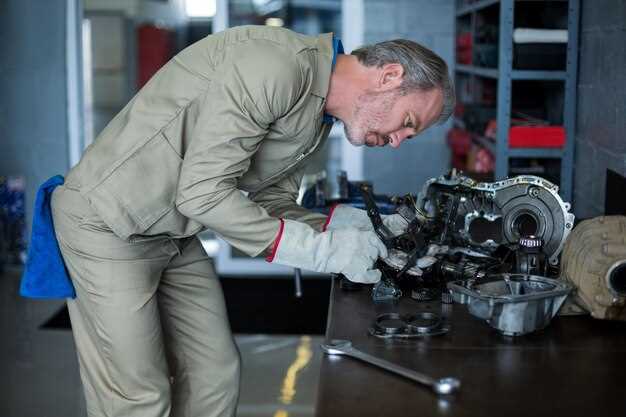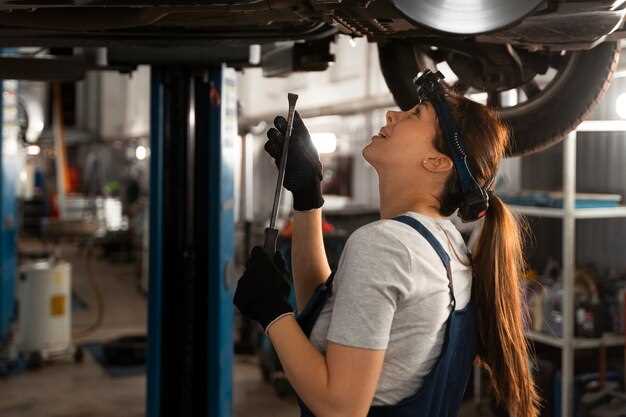
Experiencing a fuel leak can be a daunting issue for any vehicle owner. A compromised fuel system not only affects the performance of your car but can also pose significant safety risks. Therefore, addressing a leak promptly is essential to prevent further damage and ensure safe operation.
The first step in tackling a fuel leak is identifying its source. Common areas to inspect include the fuel tank, fuel lines, and connections. Understanding the potential causes of leaks–such as corrosion, wear and tear, or loose fittings–can assist in pinpointing the problem efficiently.
Once you have determined the location of the leak, the necessary repairs can be made. Depending on the severity of the issue, this may involve patching small holes or replacing damaged sections of the fuel system. With the right tools and guidance, most vehicle owners can successfully handle minor repairs themselves, leading to a safer and more reliable driving experience.
Identifying the Source of a Fuel Leak

To effectively repair a fuel leak, the first step is to accurately identify its source. Begin by inspecting the fuel tank, as this is a common area for leaks to develop. Look for signs of corrosion, cracks, or any deformation that may indicate failure.
Next, examine the fuel lines that connect the tank to the engine. These lines can wear out over time or become loose, resulting in a leak. Check for any visible damage or wet spots along the lines, which often signal fuel escaping.
Additionally, inspect the fuel pump and its connections. Sometimes, fuel can leak from faulty seals or improper fittings. Ensure these components are secured and free of cracks.
Don’t forget to analyze the surrounding area for any fuel odors, which can help pinpoint the leak’s location. If the tank appears intact, but you still detect fuel, consider checking the gaskets and seals in the fuel delivery system.
Once you have determined the source of the leak, it will be easier to proceed with necessary repairs and secure the fuel system. Prompt identification is crucial to prevent further damage and ensure safety.
Tools and Materials Needed for Tank Repair

When addressing a leaky fuel tank, it’s essential to have the right tools and materials at your disposal to ensure an efficient repair. Below is a comprehensive list of what you will need.
Firstly, gather basic hand tools such as wrenches, screwdrivers, and pliers. These will help you disassemble any components surrounding the tank to access the leak easily. A socket set may also be useful for removing bolts effectively.
You will need a fuel tank repair kit, which typically includes specialized adhesives and sealants designed to withstand fuel exposure and maintain durability. Look for epoxy or polyurethane-based products that are specifically labeled for tank repairs.
Additionally, a clean cloth or paper towels will be necessary for cleanup. It’s important to remove any dirt or debris from the area surrounding the leak to ensure a strong bond with the repair materials.
Safety equipment is crucial when dealing with fuel systems. Ensure you have gloves to protect your hands and safety goggles to shield your eyes from splashes. A respirator may also be advisable if you are working in a confined space to avoid inhaling any harmful fumes.
Lastly, consider having a bucket or container ready to catch any fuel that may spill during the repair process. Proper disposal methods for any fuel waste are also essential to maintain safety and environmental standards.
Step-by-Step Guide to Fixing the Leak
Repairing a leaky fuel system requires careful attention to detail and proper safety measures. Follow the steps below to efficiently fix the leak in your tank or fuel system.
-
Identify the Source of the Leak:
Before starting any repair, locate where the fuel is leaking from. Common areas include:
- Fuel tank
- Fuel lines
- Fuel injectors
-
Prepare Your Work Area:
Ensure you are working in a well-ventilated area away from open flames. Have the following tools and materials ready:
- Wrench set
- Screwdrivers
- Fuel line sealant or epoxy
- Replacement parts (if necessary)
-
Drain the Fuel Tank:
To safely fix the leak, drain the fuel from the tank using a siphon pump or by accessing the drain plug. Ensure the tank is completely empty.
-
Inspect the Components:
Carefully examine the fuel tank and associated components for cracks, loose fittings, or other signs of damage. Look for:
- Cracks in the tank
- Worn or damaged gaskets and seals
- Loose connections in fuel lines
-
Apply the Repair:
Depending on the nature of the leak, apply a suitable repair method:
- If the tank is cracked, use a fuel-resistant epoxy to seal the crack.
- Replace any damaged gaskets or seals.
- Tighten any loose connections in the fuel lines.
-
Reassemble and Test:
Once repairs are made, reassemble the fuel system components. Ensure that all connections are secure. After reassembly, fill the tank with fuel and check for any signs of leakage.
-
Perform Final Checks:
After confirming there are no leaks:
- Start the engine and let it run for a few minutes.
- Inspect for any unusual noises or smells.
- Monitor the area around the tank for any further signs of leaks.
By following these steps diligently, you can effectively repair a leaky fuel system and ensure safe operation of your vehicle.












